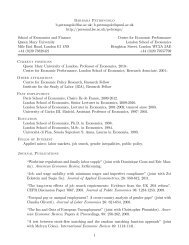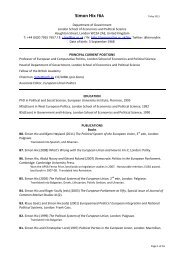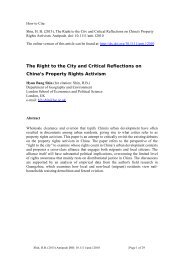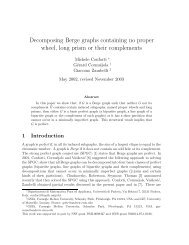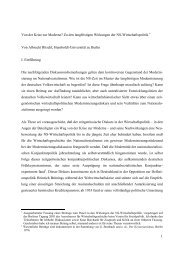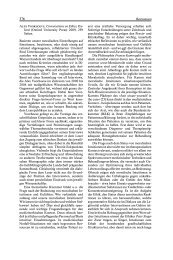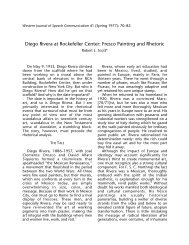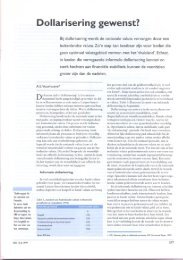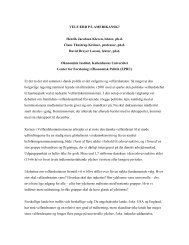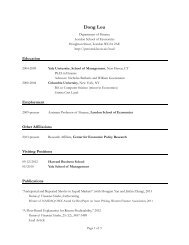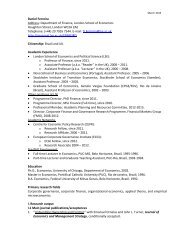Reference: MA, Debin. “The Great Silk Exchange: How the World ...
Reference: MA, Debin. “The Great Silk Exchange: How the World ...
Reference: MA, Debin. “The Great Silk Exchange: How the World ...
Create successful ePaper yourself
Turn your PDF publications into a flip-book with our unique Google optimized e-Paper software.
<strong>the</strong> Talas River (in nor<strong>the</strong>rn Turkestan) was a major turning point for <strong>the</strong> history of <strong>the</strong><br />
overland silk trade. First, it enabled <strong>the</strong> continuing eastward intrusion of <strong>the</strong> Islamic sphere<br />
of influence and led to <strong>the</strong> Tang dynasty’s loss of control over China’s western frontier.<br />
This and <strong>the</strong> gradual internal weakening of <strong>the</strong> Tang government led to <strong>the</strong> partial closing<br />
of <strong>the</strong> overland <strong>Silk</strong> Road to China for almost four hundred years, until <strong>the</strong> era of <strong>the</strong><br />
Mongol empire. 6 China’s weakened control of its Northwestern territories and subsequent<br />
political and military turmoil were, in some way, responsible for <strong>the</strong> gradual southward<br />
migration of its economic, agricultural, industrial and population center from <strong>the</strong> Yellow<br />
River area towards <strong>the</strong> Yangtze River and <strong>the</strong> coastal regions. By <strong>the</strong> time of <strong>the</strong> Sung<br />
dynasty (AD 960-1279), <strong>the</strong> most productive silk centers found <strong>the</strong>ir home in <strong>the</strong> lower<br />
Yangtze River delta, far away from Xian, <strong>the</strong> starting point of <strong>the</strong> old <strong>Silk</strong> Road. This<br />
locational shift led to <strong>the</strong> increasing use of <strong>the</strong> sea route for silk exchange Fan and Wen<br />
1993: 58).<br />
The o<strong>the</strong>r significant event, however, was that through <strong>the</strong> capture of Chinese<br />
prisoners in <strong>the</strong> Talas river, many of whom were skilled technicians, <strong>the</strong> Arabs obtained<br />
access to <strong>the</strong> rich technological knowledge base of China (Needham 1954: 236). The<br />
knowledge and <strong>the</strong> cultivation of silk were widely diffused from China to Persia, Anatolia,<br />
and regions controlled by Byzantium. In particular, <strong>the</strong> Chinese method of obtaining long<br />
and unbroken silk threads from whole cocoons by killing <strong>the</strong> worm inside before it breaks<br />
out was widely adopted (Liu 1995: 43). The Islamic conquest of Sassanian Persia and parts<br />
of <strong>the</strong> Byzantine empire not only absorbed major silk producing regions, but also eased <strong>the</strong><br />
spread of sericulture and <strong>the</strong> silk industry to North Africa and Sou<strong>the</strong>rn Spain.<br />
6



